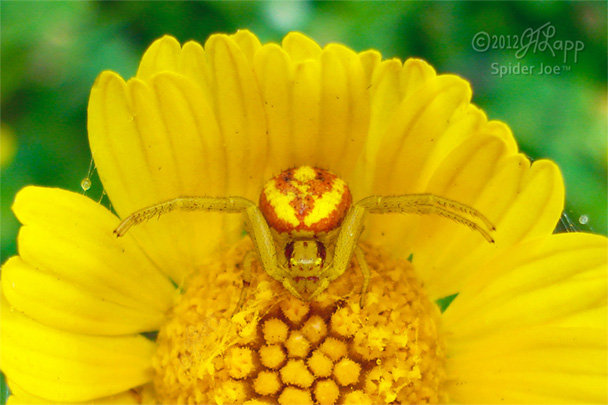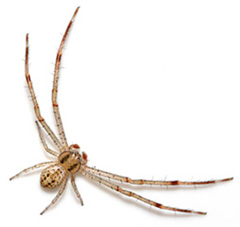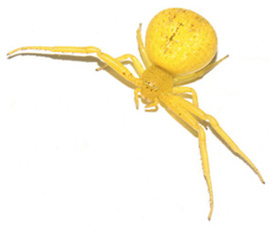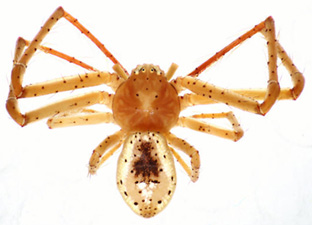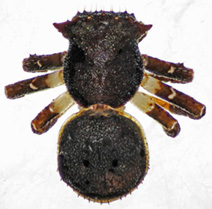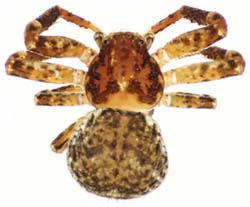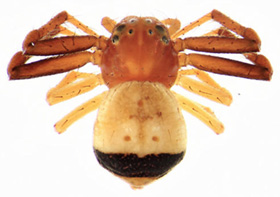Crab Spider Research
The crab spiders that sit waiting for prey on flowers are often wonderfully colored and patterned. It surprised me that we were not yet identifying species by these color patterns, so I set out to associate species with color patterns. I would photograph them live, preserve them, and identify them under a microscope. Boy was I in for some surprises. I encountered problem after problem. It seems that few crab spiders can be identified by color pattern, and there are many that we don't understand well enough to identify reliably by any means anyway. My efforts to resolve these problems have led me to some wonderful opportunities, and now I'm working toward several scientific publications.
Crab spiders belong to the family of spiders called "thomisidae." They are strongly dimorphic, meaning that males and females often look nothing alike. Consider the following two spiders. Both are Mecaphesa celer. The one on the left is male and 2.2mm long, the one on the right is female and 5.6 mm long.
These colors and patterns seem pretty distinctive, but following two spiders are also female Mecaphesa celer:
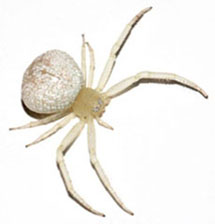
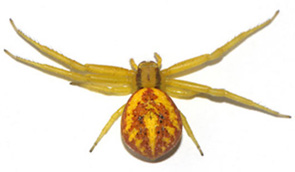
It seems that we might just enumerate all the colors and patterns available to Mecaphesa celer, but it turns out that other species can have similar colors and patterns. For example, the following two spiders are both Mecaphesa dubia females:
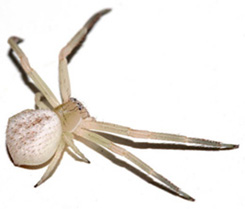
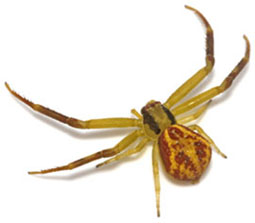
The males have similar color patterns too. Here we have, from left to right, Mecaphesa celer, Mecaphesa dubia, Mecaphesa rothi, and an undetermined Mecaphesa. The genitalia of the last of these shows a mix of the characters of the preceding specimens.

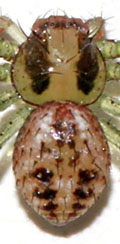
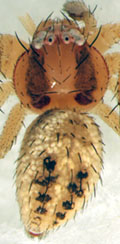
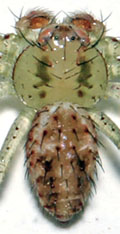
The more spiders we look at, the harder the problem seems to get. Some patterns appear to be unique to some species, but we find ourselves only able to say that some—not all—spiders of the species have the pattern, because other spiders of the species may exhibit still other patterns.
The task of associating color patterns with species is even harder for species that can't be reliably identified under a microscope. As with most spiders, we identify the species of a spider by examining genitalia, but populations vary and so do genitalia, so specimens rarely exactly match species descriptions. Complicating matters further, some species appear to hybridize, leaving us with genitalia that show a mix of characters from different species. Consider these retrolateral views of male Mecaphesa palps:

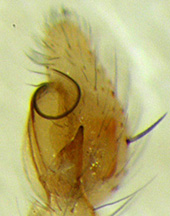
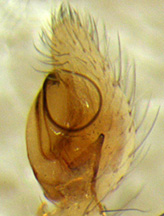
All of these palps show some characters associated with Mecaphesa celer, but none is an exact match for Mecaphesa celer or apparently for any other Mecaphesa. By studying how these characters cluster together, I'm working to learn the range of variability of each species so that we can make more accurate species determinations. The more genitalia I examine and compare, the clearer the picture becomes.
Female genitalia are also highly variable, as the following photos of epigyna show. They all exhibit characteristics that could place them as either Mecaphesa celer or Mecaphesa dubia.
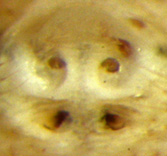
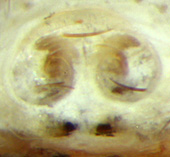
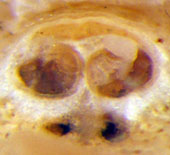
When we can't rely on the external characters of the epigynum (ventral view), we resect the epigynum from the spider's abdomen and look at the features of the epigynum on the internal side (dorsal view). Often the ventral and dorsal views of an epigynum are sufficient to ID the spider, but the dorsal view can also vary hugely. The first two of the following photos are shots of the dorsal epigynum of Mecaphesa celer. The last photo has similarities with the previous two and similarities with other species as well.
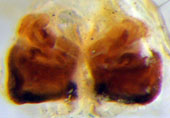
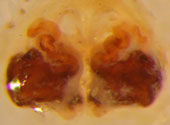
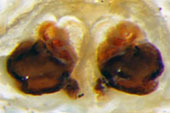
It turns out that some clusters of genitalia consistently show characters that have not been formally documented yet, suggesting that there are ways to reliably distinguish species. It's also turning out that some of these clusters are distinct from the clusters for all described species that I'm aware of. That is, it appears that I'm finding new species of crab spiders. I have two species that so far appear to be new to science. I'm now working with other arachnologists to formerly describe and name them. I'm also working on a revision of the genus Mecaphesa to capture what I'm figuring out. A "revision" is description of the species of a genus that supplants prior descriptions.
My effort so far has largely focused on flower crab spiders such as Mecaphesa, although I do have a few surprises yet to share for other groups. My findings inclined me to report problems to the editors of Spiders of North America: An Identification Manual, which is the book that arachnologists use to determine the family and genus of spiders north of Mexico. My reporting led to an invitation to revise the chapter on thomisidae for the second edition, which I did in consultation with the current chapter author, Charles Dondale, who has written many important papers on North American crab spiders. After three months of labor examining specimens of all genera of crab spiders from numerous museums, I now find myself expanding my scope of study to all crab spiders. There are so many interesting problems to investigate!
I thought I'd share photos of some rare or uncommon species. These are museum specimens, long-preserved in ethanol. Hover over an image to see the species name. Click an image for more photos.

